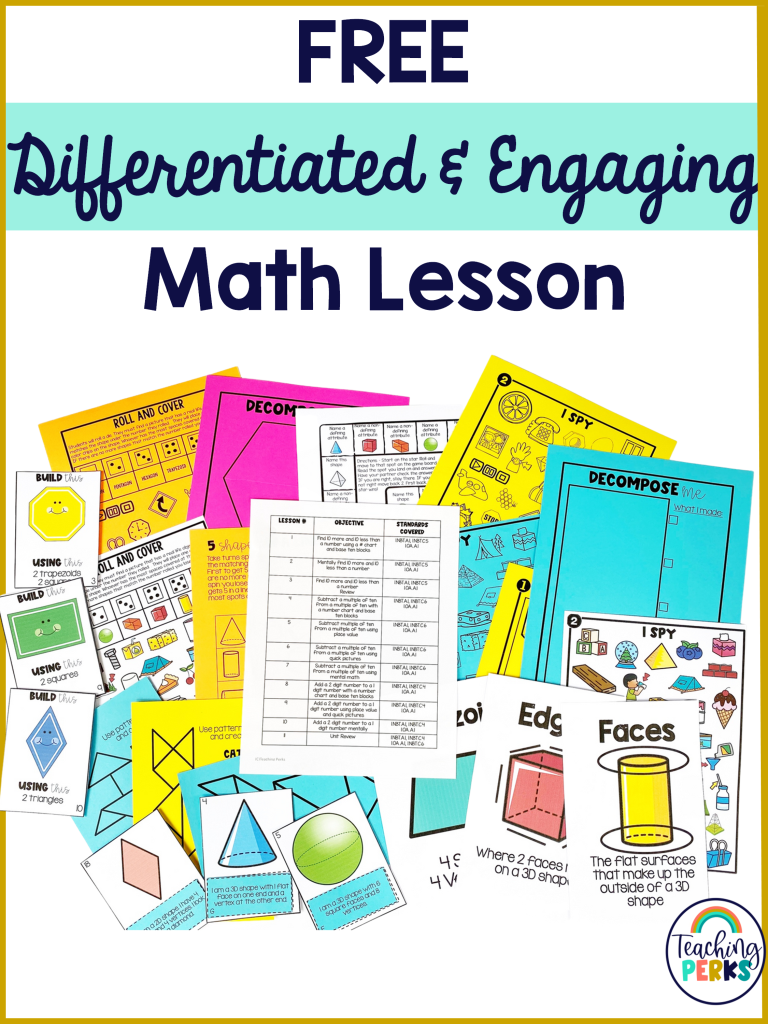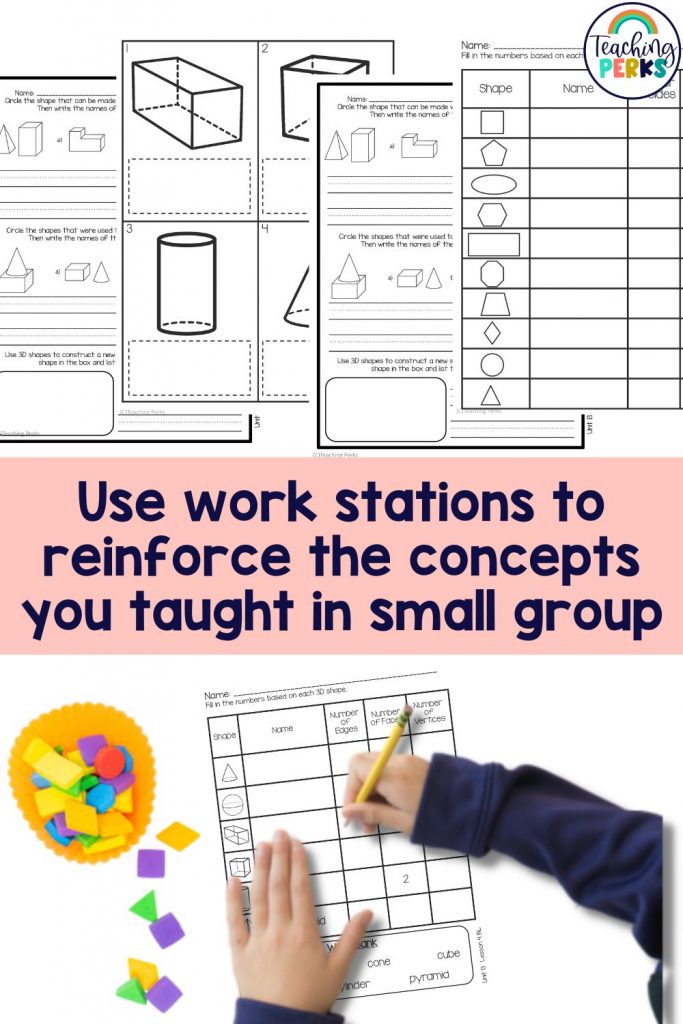Learning about different shapes is such a fun topic for students, especially because it is so hands-on and visual. If you are looking for engaging hands-on activities and strategies for teaching shapes that are 2D and 3D in your classroom, check out these 5 great ideas!

1. Go on a 2D and 3D Shape Hunt
Your students probably know all about shapes… they just don’t realize it! Because everything around us is made up of different shapes, you can kick off learning shapes with a scavenger hunt around your classroom. This is a fun way to get your littler learners moving around while learning!

The first thing you should do is give students a shape to look for. You could stick to 2D basic shapes or mix in some 3D ones as well! Let them walk around the room and find something that matches the shape to share with a small group, table, or partner. They can even point out something in the room if it’s not accessible (for example, a clock or a poster on the wall). Using real objects to represent various shapes helps student understand using how to use math in their everyday life.

2. Use 2D Shape Pattern Blocks
These are such great resources in a 1st-grade math classroom, and they can be used in so many different ways! For example, many of the activities in the 2D and 3D Shapes bundle give students the chance to work with pattern blocks and create other shapes or objects out of them.
Many young children learn by doing, and this is a great example of practicing a skill by doing it over and over again! By creating different shapes and understanding how they can work together to form something new, your students will not only know how shapes can come together, but this also creates a solid foundation for 3D shapes as well! This is one of the best activities for hands-on learning.
3. Spend Time On The Basic Terminology
Understanding how many sides a 2D shape has is helpful and it is an important skill, but terminology really begins to be important when 3-D shapes come into play!
However, when teaching shapes, the terminology doesn’t have to be boring. There are plenty of ideas to teach these concepts and still make it fun for students when they are learning new shapes and shape names and more advanced shapes.

For example, you can use shape posters, anchor charts and sticky notes to teach students the name of the shape and about vertices, sides, and faces. First, divide the poster/paper into 5 sections. Start by having the names of the shapes in the leftmost column. Then working in small groups, add how many faces, vertices, sides, and a drawing of the shape to the rest of the columns. You may have to take the lead in the beginning, but students can add to the chart and help fill it in as they start to understand the concept better!
Flashcards are also a great tool to use! You can have flashcards like the ones in the 2D and 3D Shapes bundle handy for students to refer to as they fill in the chart. On top of that, using sticky notes makes it easily reusable for teaching shapes in other small groups! This use tool is one of the easiest ways to improve your students’ shape recognition skills.
4. Use Math Stations for Teaching Shapes
One of my favorite ways to incorporate guided math into the classroom is through math stations… But this subject is particularly fun with stations!
A math station or math center allows you to spend focused time with your small groups, but it also gives the rest of the students something to work on. On top of that, students can move from station to station so they don’t get tired of working on the same practice over and over.
For teaching shapes that are 2D and 3D, you can create stations for independent worksheet practice, games, pattern blocks, and small group practice. This allows students to go through various types of learning with the topic.

5. Create Fun Warm-Up Activities
Warm-up activities are a quick and easy way to remind students what they are learning and help them focus on a new subject.
One of my favorite activities to use that I mention in this blog post is having a number of the day. This is the best way to get students thinking about a variety of shapes and the terminology they are working on! For example, if the number is 6, you can ask students what 2D and 3D shapes have 6 sides. Or, you can find objects around the room with 6 sides and have students guess which shape it is.

Teaching Shapes That Are 2D and 3D
Overall, 2D and 3D shape activities are a great way to teach this foundational subject in 1st grade. If you want to grab my bundle of fun activities that are low-prep and ink-friendly, head over to my Teachers Pay Teachers store to find my shapes unit!

Want some more math ideas for 1st grade? Check out this post on Telling Time by the Hour and Half Hour!
Leave a Reply